Wasgamuwa National Park is situated 225km north east of Colombo. Less explored, the park remains undisturbed by large crowds and is a dream for wildlife enthusiasts. Large flocks of birds including migratory birds who fly to the park in the Northern Hemisphere winter are unique to the park. It is home to herds of large elephants, sloth bears and leopards, while smaller mammals remain quite shy and aloof.
Built during the Mahaweli Project as a refuge for displaced wildlife, the park has a unique name: Was – walas meaning sloth bear and Gamuwa – meaning wood, in the native Sinhala language. It is believed that this park had been home to a significant population of sloth bears, although the numbers seemed to have declined. Sloth bare sightings are rare although signs of their movements are quite visible during morning safaris. The park is situated north of Knuckles Mountain Range in the dry zone and receives rain during October to January while the rest of the year remains dry. Topography of the park includes dense riverine forests that includes both virgin and secondary forests. Grasslands and wetlands make the park picturesque and attractive to nearly 143 species of birds. Large herds of Sri Lankan elephants are sighted throughout the year and nearly 150 elephants are recorded in this park.
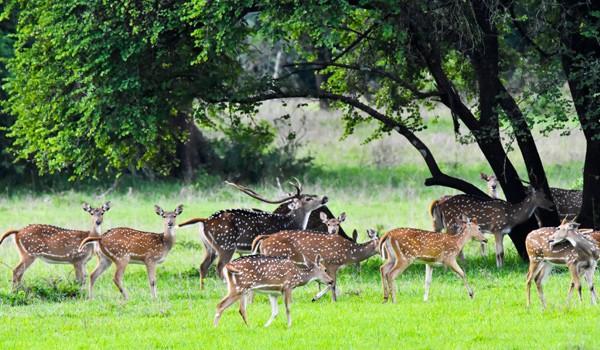
The elephants in this park are large and have adapted to living by marshlands. They are often referred to as Villu Aliya by locals meaning water elephants. These elephants are slightly larger in size. Sightings of leopards are rare as they remain elusive and shy away from people. Sloth bear sightings are equally rare. A recorded 23 mammals inhabit the park including golden palm civet, a rare species. Around 8 endemic bird species make Wasgamuwa National Park their home including red-faced malkoha, Sri Lankan spurfowl, lesser adjutant and frogmouth. Safaris in the park are almost private as it is less frequented by visitors. An occasional safari jeep may appear although soon it would disappear into the jungle. Morning safaris generally commence at 6.00 a.m. and afternoon safaris commence at 3.00 p.m. However, if your accommodation is within the national park, it is in fact your own home. Full day safaris or longer safaris are recommended for those who crave for more wildlife and photographic opportunities.
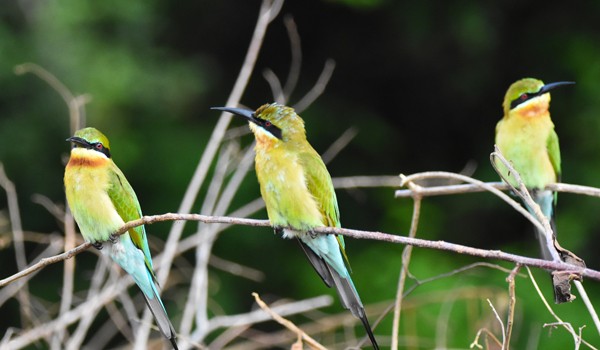
The early morning hours present many opportunities for birdwatching including sightings of rare species including the chestnut-winged cuckoo, which migrates during winter to escape the cold climate of the Himalayas. During the months from November to April there is an increase in sightings of migratory birds. Sunrise over the wetlands is equally beautiful with a few elephants submerged in marshland in the background. Afternoon safaris are a great way to watch herds of elephants as they come out of the forest to the marshy lands to drink water and bathe. These marshlands also act as playgrounds for baby elephants. There are couple of places where you stop for a picnic on safari. It is worthwhile to pause and enjoy a cup of coffee with the spectacular views around. The park borders the Cultural Triangle and evidence of the glorious days of the ancient kingdoms of Sri Lanka can be seen here. Remnants of a giant canal, ancient reservoirs and stupas (places of worship for Buddhist) are found in the park.
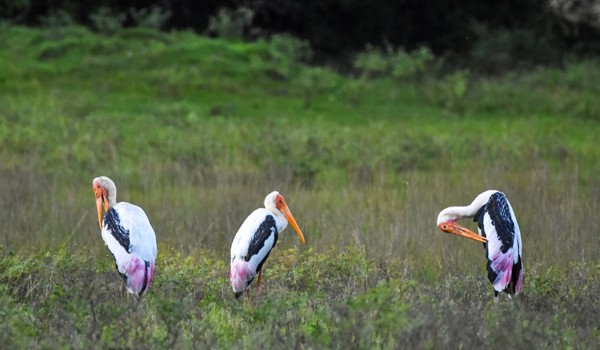
These speak of the rich cultural heritage of this area although these ruins are in dilapidated states now. The Mahaweli River, the country’s longest, borders the park. There are also remains of a ground that was once considered as one of the battle fields between King Dutugamunu and King Elara that took place during 161 BC to 137 BC. These ruins make the park interesting for travellers. Although Wasgamuwa National Park lies close to the Cultural Triangle, the entrance to the park is a good one-and-a-half hours away, making it less convenient to visit during a stay in the Cultural Triangle. It is best that a visit to Wasgamuwa National Park is treated as a separate experience. Accommodation is scare in this region and generally consists of comfortable accommodation including a tented en suite camp inside the park.
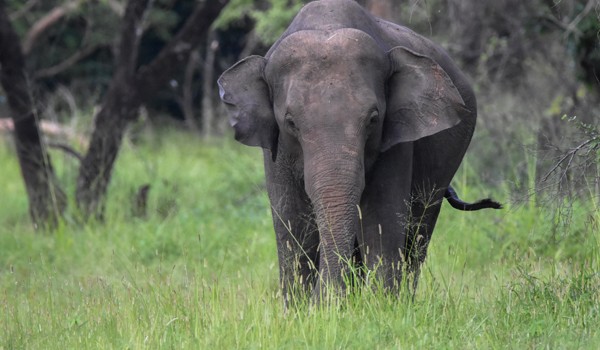
Memories we cherish most from our safaris in Wasgamuwa National Park includes the park’s favourite elephants, birds and leopards. On our very first safari with less than 30 minutes, we were fortunate to catch a glimpse of a leopard. Being extremely shy and elusive, the leopard stopped for a few minutes to look at us ‘strangers’ before heading quickly into the bush. On an afternoon safari, we had a beautiful sighting of a large herd of elephants with a few babies bathing and playing with mud on shallow waters of marshland. Sometimes the animal kingdom can be quite humorous. We spotted a large flock of blue-tail bee-eaters on their vacation. Most were sandbathing oblivious to the sound of the vehicle while three of them perched on a branch watching everyone else. Their eyes (black patches around them) seemed like stylish sunglasses.
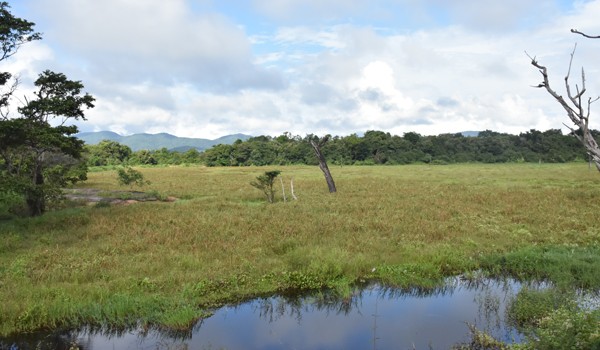
Here are sample itineraries for wildlife tours of Sri Lanka featuring Wasgamuwa National Park. Click below to read more about safaris in Wasgamuwa or get in touch to receive a detailed, tailor-made itinerary.
Amazing trip! We absolutely loved it. Sri Lanka is now a country we would definitely like to go back to and explore further.Thank you so much for all the work you did in putting the trip together for us. It was a great mix of places for us to get a good feel of the country. We will be encouraging all our friends to go to Sri Lanka.